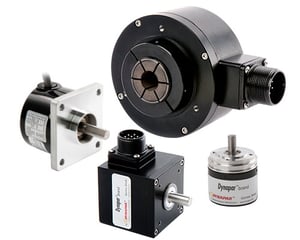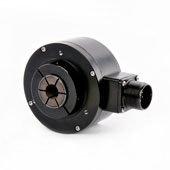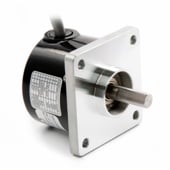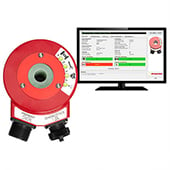HS35R Hollowshaft Incremental Encoder
Reliable Hollow-Shaft Encoder Offers Extreme Performance for Heavy Duty Applications
Customize & Buy Now- Up to 5000 PPR
- Optical Sensing
- Up to IP67
Other Categories
Optical Rotary Encoders
Magnetic Rotary Encoders
Hollow-Shaft Encoders
Hub-Shaft Encoders
Shaft Encoders
Miniature Encoders
Hazardous Area Encoders
Non Contact Encoders
Bearingless Encoders
Ethernet Protocol Encoders
Service & Support Overview
Product Quicklinks
Competitor Parts List
Discontinued Encoder Guide
Literature Library
RMA Request
Technical Support
Product Manuals & Installation Guides
Knowledge Center
Technology
How to Choose Feedback
Application Examples
Case Studies
Encoder Issues and Troubleshooting
White Paper Downloads
Literature Library
Power Point Downloads
Videos
Featured Links
Motor Encoders
Quadrature Encoders
Optical Encoders
Magnetic Encoders
How to Specify a Resolver
Draw Wire Encoders
Hall Effect Encoders
Encoder Accuracy vs Resolution
An incremental encoder is a type of encoder device that converts angular motion or position of a shaft into an analog or digital code to identify position or motion. Incremental encoders are one of the most commonly used rotary encoders.

Incremental encoders can be used in positioning and motor speed feedback applications, including servo/light, industrial or heavy-duty applications.
An incremental encoder provides excellent speed and distance feedback and since there are few sensors involved, the systems are both simple and inexpensive. An incremental encoder is limited by only providing change information, so the encoder requires a reference device to calculate motion.
An incremental encoder provides a specified amount of pulses in one rotation of the encoder. The output can be a single line of pulses (an “A” channel) or two lines of pulses (an “A” and “B” channel) that are offset in order to determine rotation. This phasing between the two signals is called quadrature.
Learn more about quadrature encoder output here
In an incremental optical encoder, the typical assembly consists of a spindle assembly, PCB, and cover. The PCB contains a sensor array that creates just two primary signals for the purpose of position and speed. For an incremental optical encoder, an optical sensor detects light as it passes through a marked disc. The disc moves as the spindle assembly rotates and the information is translated into pulses by the PCB. For an incremental magnetic encoder, the optical sensor is replaced with a magnetic sensor and the rotating disc contains a series of magnetic poles.
Optionally, additional signals can be provided:
An index or ‘Z’ channel can be provided as one pulse per revolution signal for homing and pulse count verification on the A and/or B channels. This index can be gated to either A or B in their various states. It can also be un-gated and vary in width.
Commutation (U, V, W) channels can also be provided on some encoders. These signals are aligned to the commutation windings found on servo motors. They also ensure that the drive or amplifier for those motors apply current to each winding in the correct sequence and at the correct level.

Reliable Hollow-Shaft Encoder Offers Extreme Performance for Heavy Duty Applications
Customize & Buy Now
Size 25 Incremental Shafted Encoder with Extended Temperature Option
Customize & Buy Now
Programmable Hollow Shaft Incremental Encoder with Specific Fault Detection
Customize & Buy NowWhile incremental encoders are commonly used in many feedback applications, resolvers and absolute encoders provide alternatives depending on the application requirements and environment.
Resolvers are electro-mechanical precursors to encoders based on technology going back to World War II. An electrical current creates a magnetic field along a central winding. There are two windings that are perpendicular to each other. One winding is fixed in place, and the other moves as the object moves. The changes in the strength and location of the two interacting magnetic fields allow the resolver to determine the object's motion.
The simplicity of the resolver design makes it reliable in even extreme conditions, from cold and hot temperature ranges to radiation exposure and even mechanical interference from vibration and shock. However, the forgiving nature of resolvers for both origin and application assembly comes at the expense of their ability to work in complex application designs because it cannot produce data with enough accuracy. Unlike incremental encoders, resolvers only output analog data, which can require specialized electronics to connect with.
Learn more about resolvers and how they work here
Absolute Encoders work in situations where accuracy for speed and position, fail tolerance, and interoperability matter more than system simplicity. The absolute encoder can "know where it is" in relation to its position in case of a system power-down and restart if the encoder moves during a power-down.
The absolute encoder understands positioning information – it doesn’t need to rely on outside electronics to provide a baseline index for the encoder position. Especially when compared to resolvers and incremental encoders, the obvious strength of absolute encoders is how their positioning accuracy affects the overall application performance, so it is typically the encoder of choice for higher precision applications such as CNC, medical, and robotics.
Learn more about absolute encoders and how they work here
An Incremental Encoder is designed to be versatile and customizable to fit various applications. The three broad categories of applications based on the environment are:
Use our selection tool to narrow down your search
© Copyright Dynapar 2024 All Rights Reserved